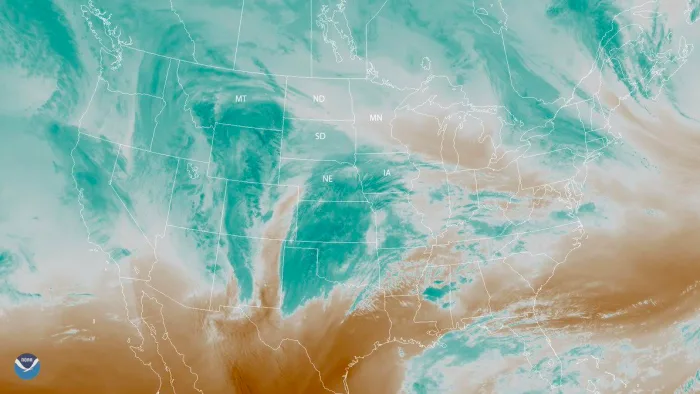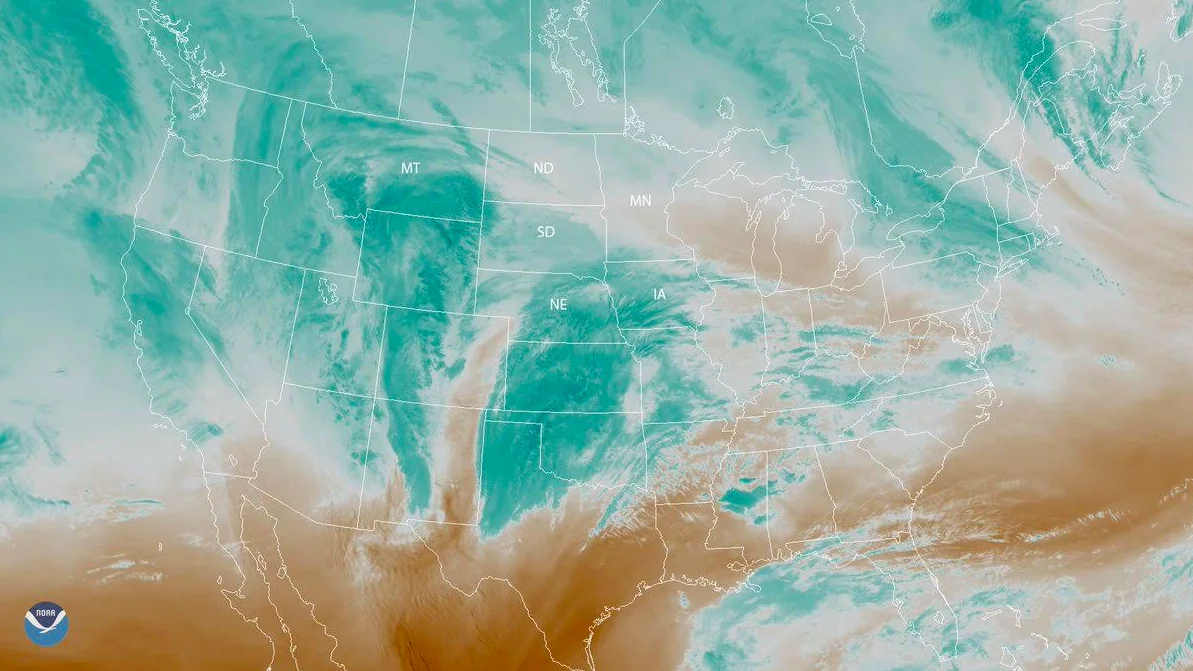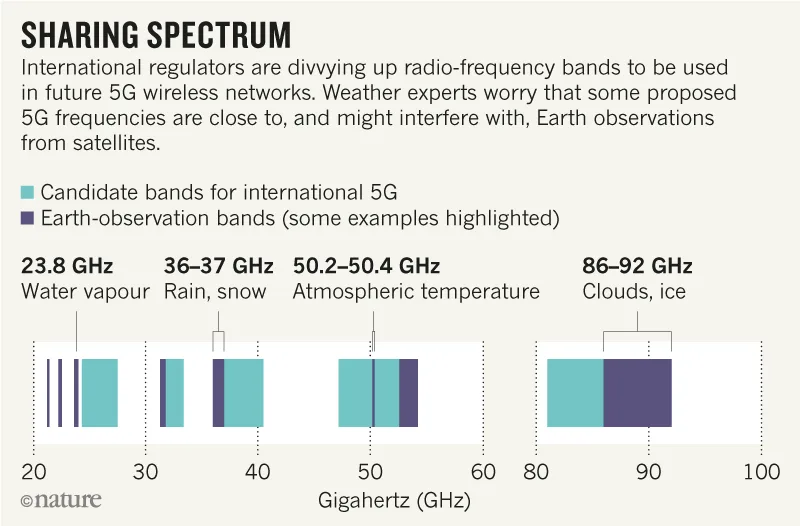
5G wireless networks could impact your weather forecast
Next-generation mobile technology is on the way and experts say it could spell trouble for satellite-based earth observations.
The U.S. Government has begun auctioning off blocks of wireless radio frequencies that will be the new 5G communications network. The problem, meteorologists say, is that some of the allocated frequencies may interfere with the frequencies satellites use to obtain crucial Earth-observation data.
To reduce interference, telecommunication companies would need to take adequate steps to ensure Earth-observing satellite systems are not impacted while flying over U.S. territory.
The satellites that may be affected by 5G technology are already at work in our skies, collecting accurate data on the concentration of water vapour in the atmosphere. Without information on such a fundamental atmospheric parameter, weather forecasts conducted by a variety of global institutions could be affected.

Satellite Image of Water Vapor concentration by NOAA.
The 23.8 gigahertz frequency is commonly used to collect measurements of atmospheric water vapour both during the day and night. This data is eventually fed into computer models, to predict how storms and other weather systems develop and evolve during the coming hours and days. With other 5G signals soaring the skies, it is very possible some of them could be confused with the water vapour signal, and lead to miscalculations by the forecast models, which in turn would produce an erroneous weather forecast.
VIDEO: FALCON HEAVY LAUNCH DETECTED BY WEATHER SATELLITE
NASA (National Aeronautic and Space Administration) and NOAA (National Oceanic and Atmospheric Administration) are negotiating with the Federal Communications Commission (FCC), the main organism behind the setup of wireless networks in the U.S. Despite the request launched by both administrations, the FCC has already commenced auctioning off a portion of 5G licenses, which has provided a revenue of US$2 billion.
The United States is a large communications market, and the methods the U.S. government employs in the rollout of 5G are likely to influence global discussions. In October 2019, regulators from around the world will gather in Egypt to try and agree on which frequencies companies will be able to use for 5G transmissions and what level of interference with Earth-observation frequencies is acceptable.

Sharing Spectrum Graph from Nature International Journal of Science.
For years, the scientific community has shared a spectrum of frequencies while avoiding potential conflicts relating to interference and data contamination.
Potential issues will not be contained to U.S. weather forecasts.
Being unable to have access to reliable atmospheric data from the United States can have a negative impact on European forecasts as well. Weather patterns across the North Atlantic are commonly steered by conditions over the United States and Canada three to four days prior, meaning miscalculations on one side of the ocean basin could impact data on the other side as well.
The problem could escalate further because the FCC plans to begin an even larger 5G auction in December of this year. It would involve three more frequency bands, some of which are currently used by satellites collecting essential data on cloud cover, precipitation, and sea ice.
Source: Nature











